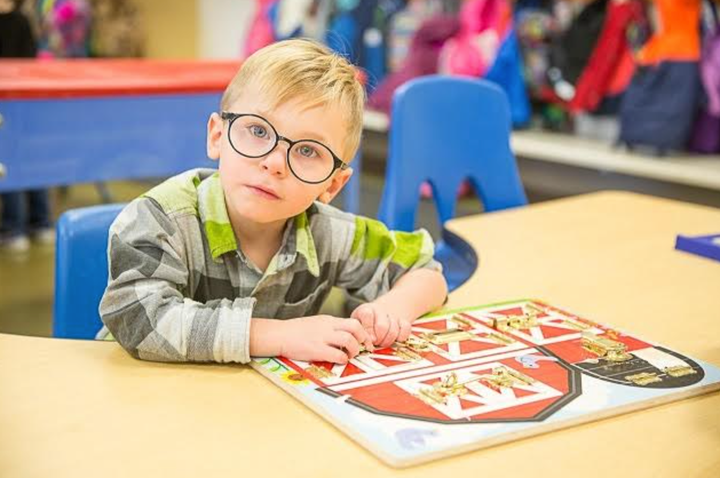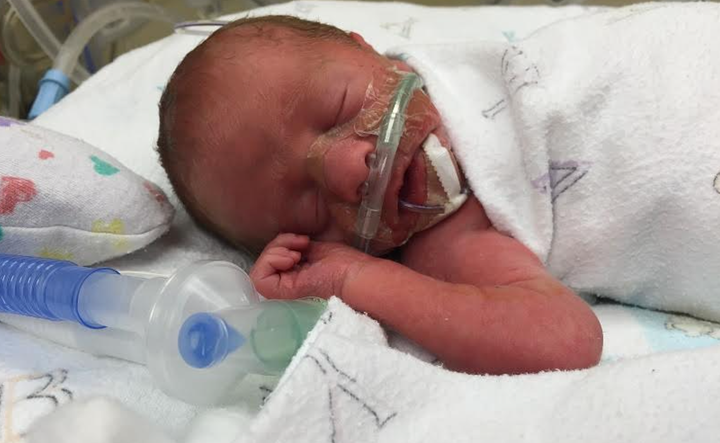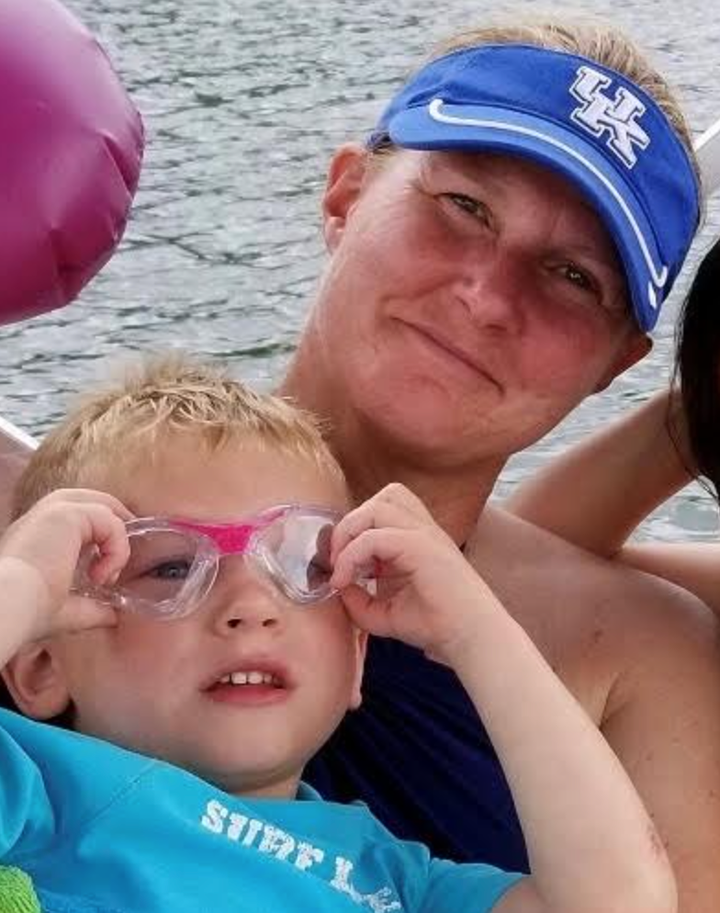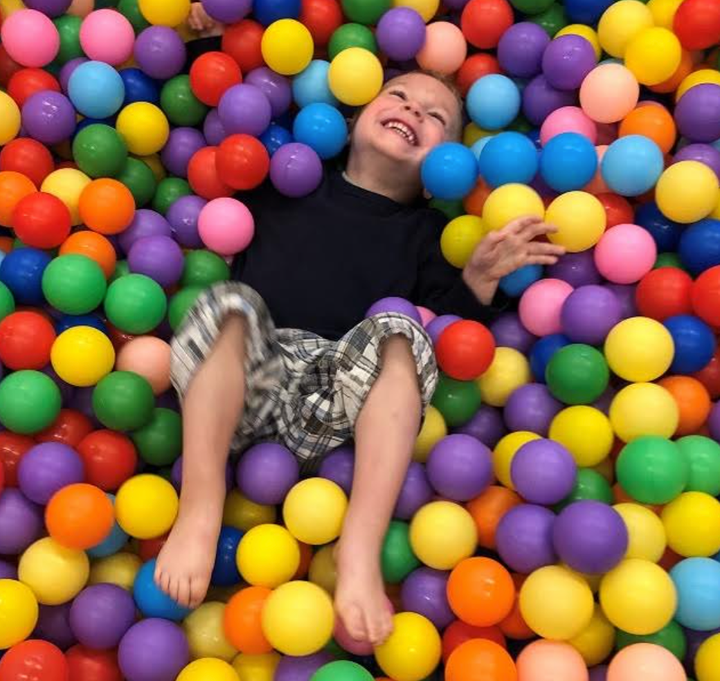
My five-year-old son was kicked out of two day cares for his behaviour ― for biting; for rocking so hard he damaged furniture; and for pinching, pushing and hitting. We have had to leave public places due to embarrassing tantrums. I get nervous every time another child stands too close to him ― there is a 50/50 chance the interaction will go well or the other child will be crying within seconds.
But all children start out as innocent, tiny babies. Our story is no different.
My son, CA, was born under inauspicious circumstances. He was nine weeks premature and weighed just 3lb, 6oz. His lungs were underdeveloped. He had been exposed to MRSA, hepatitis and, likely, methamphetamines in utero. His birth mother was a drug user with a strong distaste for basic obstetrics care and general nutrition.
Prior to his birth, CA’s birth mom arranged for my husband and me to adopt him. The moment we heard of his birth, we stepped into the role of CA’s parents. He was our son, and we fully intended to celebrate his birth and life despite his adverse beginning.
Our sweet boy spent eight gruelling weeks in a neonatal intensive care unit four hours from our home. The rhythm of his heartbeat was marked with a loud beep; an alarm sounded each time that rhythm went awry. A different alarm announced that he had stopped breathing. CA was fed with one tube and breathed with help from another. The chaos in his hospital room made holding him difficult but, thankfully, not impossible. When CA could breathe and eat on his own, he was released from the hospital with assurances that he would live a long and healthy life. The worst, we thought, was behind us. We were wrong.
CA’s bright blue eyes, blond hair and perfect chin dimple give him the appearance of an angel, but he was temperamental from the beginning. He cried easily and often; feeding was a struggle; he disliked being held. Yet even his darkest moods as a baby did not prepare us for the destruction he wrought as a toddler.
By age two, we could not get through a meal without CA throwing everything he could reach. He damaged his toys. He kicked, scratched and bit other children. He liked to be alone and preferred not to play with or near others. He had epic tantrums and odd behaviours, including rocking his torso and head so violently that we worried about head injury. We had to bolt his bed to the wall and remove all toys and games from his bedroom. We could not leave him alone for even a second for fear he would hurt himself, his sister or our pets.

I like to think my husband and I are relatively intelligent people. We each obtained advanced degrees and enjoy our rigorous professional careers. Imagine how frustrated we were with our inability to effectively communicate with our own toddler. Despite our best efforts, we could not determine what triggered our son’s destructive behavior or what we could do to stop it.
After an eardrum-shattering tantrum at the farmers market, we stopped taking our son in public. We saw the stares and heard the comments muttered under the breaths of bystanders who were certain that: (a) we were horrible parents who refused to discipline our child; and/or (b) CA was a poorly supervised, unloved hooligan. For many months, we skipped social engagements, stopped eating out and stayed home from community events just to avoid the judgment we felt. We still felt the anxiety, frustration and fear that came with having a child we could not explain or control. We just did it without an audience.
Because my husband and I had to work, however, day care could not be avoided. CA initially did well at an in-home day care, but his escalating behaviours became too much for the provider. A move to a day care centre proved catastrophic due to the staff’s unwillingness or inability to understand our son’s demanding personality. We gave up on day care altogether the day he bit seven children over a 90-minute period. We shifted our work schedules to care for CA at home, but we faced the same day-to-day struggles his day care providers had. We applied various disciplinary styles: some with tiny successes and more with disastrous ends. Soon our son began to display opposition and defiance in addition to physical aggression.
Although we still feared public scrutiny, we knew we could not forever insulate our son from the world (or the world from him). One Sunday when he was 3½, we attended services at our church. We sat in the back to ease a quick exit, but CA was on his best behaviour and appeared to enjoy the goings-on. That is until, late in the service, I walked toward the altar to take communion with my son in my arms. As we neared the dais where the praise band played, CA began to squirm and whine, which then turned to inconsolable crying accompanied by kicking, rearing and head-banging. All front-and-centre, to the dismay of several hundred onlookers. We left quickly, but the tantrum continued for 45 minutes more as we strapped him into his car seat and retreated to our home. When the storm passed, CA provided a shocking explanation for his outburst: The loud music “hurt his body.”
We are active and engaged parents who strive for respect and kindness. In fact, we prided ourselves on our consistency with CA’s older sister, back when she was an only child. We workshop parenting issues among our friends, read the mommy blogs and parenting books, and consult with professionals as needed. Nothing we’d heard, read or discussed up to this point had prepared us to decode what it means when a child feels physical pain in the presence of loud music.
Through extensive research and consultation with CA’s paediatrician, early childhood staff from our school district and a family counsellor, we learned that CA’s behaviour was likely the consequence of a sensory processing disorder (SPD).

Sensory processing refers to the way the brain receives and responds to messages from the senses (sight, taste, smell, hearing and touch). SPD is a neurological disorder that exists when the brain either cannot receive those messages or cannot interpret the messages it receives. The disorder was first recognised in the 1960s by Dr. Jean Ayres, who described SPD as a “traffic jam of the brain.”
After the Epic Church Tantrum of 2019, my husband and I easily recognised CA’s hypersensitivity to sound. We also suspected he was hypersensitive to touch. It was no mystery that standing too close or picking him up without warning was a risk to one’s life and limb. Still, in our minds, these sensitivities could not explain the number and severity of tantrums and aggression we faced on a daily basis. And thus came our introduction to the “hidden” senses: the vestibular and proprioceptive systems.
The vestibular systems help us balance and orient ourselves in space. Children with vestibular processing disorder cannot easily recognise whether their bodies are moving or still, and, if moving, how fast and in what direction. Some children cope by avoiding movement altogether; others seek movement in its most extreme forms. Vestibular function is also responsible for the “flight, freeze or fight” response we experience when stressed or frightened. Without a clear idea of which action to take, children with vestibular dysfunction often react to everyday frustrations in an overly anxious or highly emotional manner.
The proprioceptive processing system helps us know where our bodies begin and end. Children with proprioceptive processing disorder do not instinctively know how to move and with how much effort. As a result, they can be awkward and clumsy, and have no sense of their own strength. As a result, they are in constant motion, bump into things or seem out of control.
Little is known about the cause of SPD, but risk factors include premature birth, in utero drug exposure, certain developmental delays or neurological disorders, and being over- or under-stimulated during crucial periods of neurological development, which may occur during lengthy hospitalisation or institutionalisation in infancy or early childhood. In other words, our son’s inauspicious beginning put him at high risk for SPD.
Children with SPD benefit greatly from physical and occupational therapies, where they learn to manage their responses to sensations and practice coping mechanisms to address their sensitivities. Unfortunately, some mental health providers do not recognise SPD as a true disorder. Worse still, most health insurance carriers refuse to cover the therapies most beneficial to children with SPD. Others only cover therapies provided in conjunction with a separately diagnosed mental health or neurological disorder, such as autism or attention deficit hyperactivity disorder.
CA has been diagnosed with global developmental delays resulting from his premature birth. As a result, our insurance carrier covers paediatric occupational and physical therapy (OT/PT), and he has received special education services from our school district since birth. These service providers have been instrumental in ensuring that CA has the SPD therapy and support services he needs. In fact, the same month we learned about SPD, CA’s special education case manager called to ask about our plans for preschool for the coming school year. My husband and I were aghast. We had assumed preschool was out of the question for our son. We had a better understanding of his behaviours and access to therapies to address them, but there was still a 50/50 chance any interaction between CA and another child would end in tears and/or physical harm.

After several conversations with the school and CA’s OT/PT providers, we signed him up for preschool and held our breath. Our anxiety increased when we learned CA’s teacher was just one year out of college. Believing this fresh-faced educator would be clueless about SPD, we scheduled a meeting intending to inform her of what we knew. Teacher Abby began the meeting by giving us a tour of her room, which included a “calm-down tent” for kids who need a moment to themselves, weighted lap blankets for those who require proprioceptive input and a daily schedule with photographs to assist anxious students in transitioning from one activity to the next. Clearly, our son was in the right place.
Surrounded by this great support system, CA thrived in preschool. He made friends, played appropriately and discovered a love for books. Weekly occupational and physical therapy at a hospital and school-based support services gave CA an opportunity to move with the speed and force he sought. A supportive preschool staff and a fantastic special education team cheered him on with every success and had the know-how to address his behaviours in a positive way. We still struggled at home sometimes, but we were slowly learning how to parent this special child in the best way we could.
Then Covid-19 hit, and the tenuous peace we were beginning to enjoy came to an end.
Without school-based supports or physical and occupational therapy, CA did not receive the sensory input he needs. With two parents working from home and a sister doing distance learning, he did not receive the attention he deserved. His behaviour regressed ― his tantrums reappeared stronger than ever, he flatly refused to obey household rules, he responded to discipline with headbutts and scratching, and he screamed himself hoarse. Worse than the times when we chose to retreat from the public, the quarantine meant we had no way to escape the chaos. My husband and I grew exhausted and sad, our daughter frustrated and angry, and CA lost his bright smile.
Now six months later, we are nervously preparing CA for his return to school. He will have an experienced teacher, and his special education team is ready and willing to get him back on track. We have resumed weekly occupation and physical therapy to ensure he gets the sensory input he needs. We are setting him up for success, and we believe in this bright, funny and intelligent child.
Yet I still worry about those people who stand in judgment when CA cannot regulate his feelings or behaviour. I guess if we happen to be in public when we miss a behaviour trigger or CA simply cannot cope with an unavoidable one, I will simply inform the assembled audience that my son is not a little jerk. He has sensory processing disorder.
Kristin Asche is a lawyer who spends her free time advocating for children with disabilities, adoptive families and those who wish to adopt, and the public school system. This article first appeared on HuffPost Personal.
Have a compelling personal story you want to tell? Find out what we’re looking for here, and pitch us on ukpersonal@huffpost.com